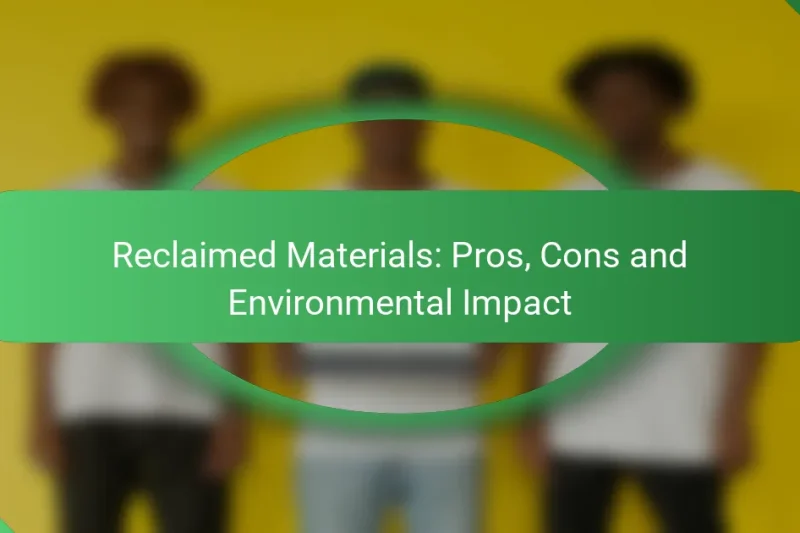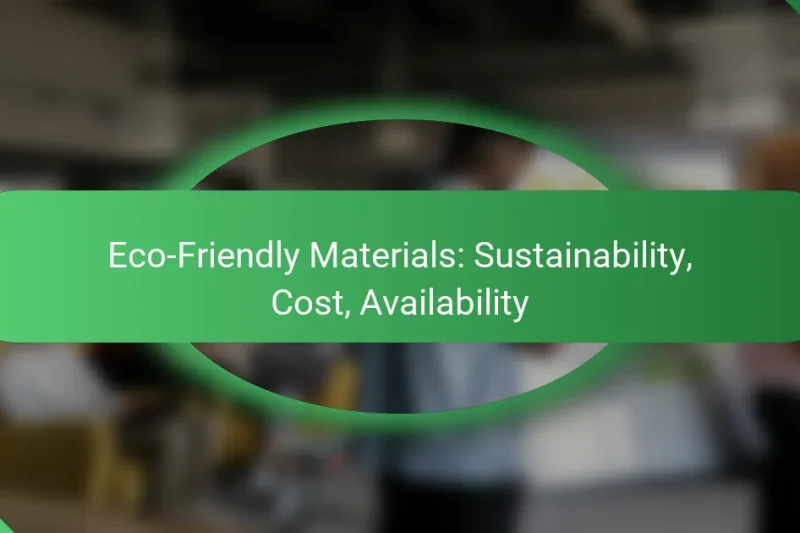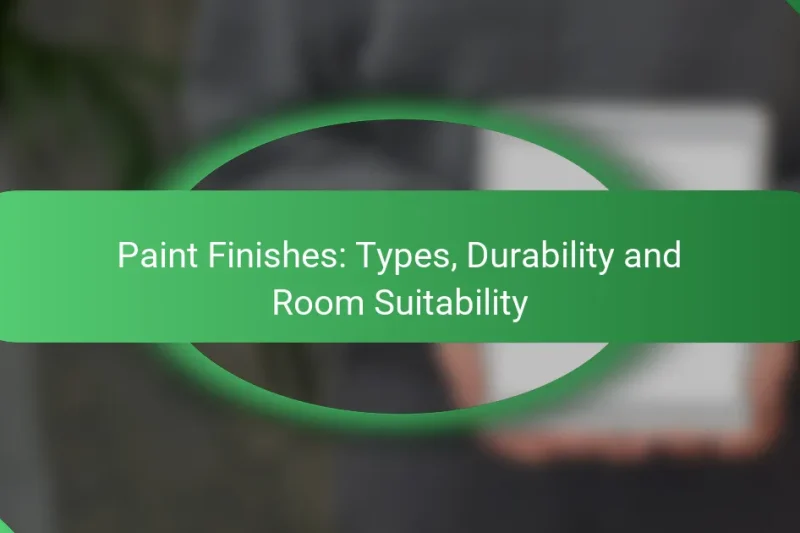Energy-efficient windows are an excellent choice for homeowners looking to reduce energy costs while enhancing comfort … Energy-Efficient Windows: Benefits, Features and InstallationRead more
Home Renovation Material Selection
When embarking on a home renovation, selecting the right materials is crucial for achieving both aesthetic appeal and long-lasting durability. In Canada, popular choices such as wood, brick, granite, vinyl, and glass each bring unique advantages to your project. Additionally, prioritizing sustainable options can enhance your home’s energy efficiency while minimizing environmental impact, making it essential to consider factors like sourcing and VOC levels. Understanding the costs associated with these materials will also help you budget effectively for your renovation journey.
Material Lifespans: Durability, Cost and Replacement Timing
Understanding the lifespans of construction materials is crucial for making informed decisions about durability, cost, and … Material Lifespans: Durability, Cost and Replacement TimingRead more
High-End vs. Budget-Friendly Flooring: Which Is Better and When to Use
Choosing the right flooring involves balancing budget, style, and functionality. High-end options like hardwood can elevate … High-End vs. Budget-Friendly Flooring: Which Is Better and When to UseRead more
Reclaimed Materials: Pros, Cons and Environmental Impact
Reclaimed materials offer a sustainable alternative in construction and design, providing environmental benefits, cost savings, and … Reclaimed Materials: Pros, Cons and Environmental ImpactRead more
Eco-Friendly Materials: Sustainability, Cost, Availability
Eco-friendly materials are essential for promoting sustainability in construction and other industries, as they minimize environmental … Eco-Friendly Materials: Sustainability, Cost, AvailabilityRead more
Paint Finishes: Types, Durability and Room Suitability
When selecting paint finishes for your home, it’s essential to consider the specific room’s usage and … Paint Finishes: Types, Durability and Room SuitabilityRead more
Countertop Materials: Durability, Maintenance and Aesthetic Appeal
Choosing the right countertop material is essential for balancing durability, maintenance, and aesthetic appeal in your … Countertop Materials: Durability, Maintenance and Aesthetic AppealRead more
What are the best materials for home renovation in Canada?
The best materials for home renovation in Canada include wood, brick, granite, vinyl, and glass. Each material offers unique benefits and considerations that can enhance the durability, aesthetics, and energy efficiency of your home.
Wood for framing and flooring
Wood is a popular choice for framing and flooring due to its strength and versatility. In Canada, softwoods like pine and fir are commonly used for structural framing, while hardwoods such as oak and maple are favored for flooring because of their durability and aesthetic appeal.
When selecting wood, consider the moisture levels in your area, as this can affect wood performance. Using treated wood for areas prone to dampness can help prevent rot and insect damage. Aim for a balance between cost and quality, as higher-grade woods can significantly enhance your home’s value.
Brick for exterior walls
Brick is an excellent material for exterior walls, providing durability and low maintenance. In Canada, brick can withstand harsh weather conditions, making it a reliable choice for insulation and energy efficiency.
When choosing brick, consider the local climate and the aesthetic of your neighborhood. Standard sizes and colors are available, but custom options can enhance your home’s curb appeal. Ensure proper installation to avoid moisture issues, which can compromise the integrity of the structure.
Granite for countertops
Granite is a premium choice for countertops, known for its durability and resistance to scratches and heat. It is available in various colors and patterns, allowing homeowners to customize their kitchen or bathroom spaces.
When selecting granite, consider the thickness and finish, as these factors can influence both appearance and functionality. Regular sealing is recommended to maintain its beauty and prevent staining. Budget for granite, as it tends to be more expensive than other countertop materials, but its longevity can justify the investment.
Vinyl for siding
Vinyl siding is a cost-effective option for home exteriors, offering a variety of styles and colors. It is lightweight, easy to install, and requires minimal maintenance, making it a popular choice for Canadian homeowners.
When selecting vinyl siding, look for high-quality products that resist fading and cracking. Consider insulation options that can enhance energy efficiency. Proper installation is crucial to prevent moisture infiltration, which can lead to mold and structural issues.
Glass for windows
Glass is essential for windows, providing natural light and enhancing energy efficiency. In Canada, double or triple-glazed windows are recommended to improve insulation and reduce heating costs during cold winters.
When choosing glass for windows, consider the frame material and energy ratings. Low-emissivity (Low-E) coatings can further improve energy efficiency by reflecting heat. Ensure proper installation and sealing to maximize performance and prevent drafts.
How to choose sustainable renovation materials?
Choosing sustainable renovation materials involves selecting options that minimize environmental impact while ensuring durability and functionality. Focus on materials that are recycled, locally sourced, and low in volatile organic compounds (VOCs) to create a healthier living space.
Recycled materials
Recycled materials are those repurposed from previous uses, reducing waste and the need for new resources. Common examples include reclaimed wood, recycled metal, and glass tiles. When selecting recycled materials, check for certifications that verify their recycled content.
Consider the aesthetic and structural integrity of recycled options. While they often add unique character to a renovation, ensure they meet local building codes and standards for safety and durability.
Locally sourced products
Locally sourced products are materials obtained from nearby suppliers, which reduces transportation emissions and supports the local economy. Look for materials like stone, wood, or brick that are harvested or manufactured within a reasonable distance from your project site.
Choosing local products can also enhance the character of your home by reflecting regional styles and traditions. Verify the sourcing practices of suppliers to ensure they adhere to sustainable practices.
Low-VOC paints
Low-VOC paints contain fewer volatile organic compounds, which can improve indoor air quality and reduce harmful emissions. When selecting paints, look for labels indicating low or zero VOC content, typically under 50 grams per liter.
While low-VOC options may be slightly more expensive than traditional paints, the health benefits and reduced environmental impact make them a worthwhile investment. Always test a small area first to ensure the color and finish meet your expectations before committing to larger applications.
What are the costs of common renovation materials?
The costs of common renovation materials can vary significantly based on quality, brand, and local market conditions. Understanding these costs helps homeowners budget effectively for their renovation projects.
Average cost of hardwood flooring
The average cost of hardwood flooring typically ranges from $3 to $12 per square foot, depending on the type of wood and finish. Popular choices like oak or maple tend to be on the lower end, while exotic woods can be significantly more expensive.
When selecting hardwood flooring, consider installation costs, which can add another $2 to $5 per square foot. It’s also essential to account for maintenance, as some finishes may require more frequent refinishing.
Cost of ceramic tiles
Ceramic tiles generally cost between $1 and $15 per square foot, influenced by factors such as design, size, and brand. Basic tiles are more affordable, while designer or large-format tiles can push the price higher.
Installation costs for ceramic tiles can range from $4 to $8 per square foot. Be sure to factor in additional expenses for grout and underlayment, which can add to the overall budget.
Price range for kitchen cabinets
The price range for kitchen cabinets varies widely, typically falling between $100 and $1,200 per linear foot. Stock cabinets are the most economical option, while custom cabinets can be significantly pricier.
When budgeting for kitchen cabinets, consider both the material and the finish. Solid wood cabinets are often more expensive than those made from particleboard or MDF, but they offer greater durability and aesthetic appeal.
What factors influence material selection for renovations?
Material selection for renovations is influenced by durability, maintenance needs, climate suitability, and design aesthetics. Each factor plays a critical role in ensuring the longevity, functionality, and visual appeal of the renovated space.
Durability and maintenance
Durability refers to how well materials withstand wear, pressure, and environmental factors over time. Choosing materials with high durability can reduce the frequency and cost of repairs, making them a wise investment.
Maintenance needs vary significantly among materials. For instance, hardwood floors may require periodic refinishing, while vinyl flooring is generally easier to clean and maintain. Consider the long-term upkeep when selecting materials to avoid unexpected costs.
Climate suitability
Climate suitability involves selecting materials that can endure local weather conditions. For example, in humid areas, materials like treated wood or composite decking are preferable to prevent rot and decay.
Additionally, insulation materials should be chosen based on the climate to enhance energy efficiency. In colder regions, materials with higher R-values are essential for maintaining warmth and reducing heating costs.
Design aesthetics
Design aesthetics focus on the visual appeal and style of materials in relation to the overall design of the space. Selecting materials that complement the existing architecture can enhance the home’s value and attractiveness.
Consider color, texture, and finish when choosing materials. For example, sleek, modern finishes may suit contemporary homes, while rustic materials like reclaimed wood can enhance a farmhouse style. Balance aesthetics with functionality to achieve a cohesive look.
How to evaluate material quality for renovations?
To evaluate material quality for renovations, consider factors such as durability, safety standards, and suitability for your specific project. High-quality materials can enhance the longevity and aesthetic appeal of your renovation, while poor choices may lead to increased costs and maintenance issues.
Certification standards
Certification standards indicate that materials meet specific safety and performance criteria. Look for certifications from recognized organizations, such as the American National Standards Institute (ANSI) or the International Organization for Standardization (ISO). These certifications can provide assurance that the materials are reliable and safe for use in your home.
In the European Union, materials may also need to comply with CE marking, which signifies conformity with health, safety, and environmental protection standards. Always check for these certifications to ensure quality and compliance.
Brand reputation
Brand reputation plays a crucial role in material selection. Established brands often have a track record of quality and customer satisfaction, making them a safer choice for renovations. Research customer reviews, ratings, and testimonials to gauge the reliability of a brand.
Consider reaching out to local contractors or renovation professionals for their recommendations on trusted brands. Their experience can help you avoid lesser-known brands that may not deliver on quality.
Warranty options
Warranty options can provide peace of mind when selecting materials for renovations. A strong warranty typically indicates that the manufacturer stands behind their product, covering defects and performance issues for a specified period. Look for warranties that last several years, as they often reflect the manufacturer’s confidence in their materials.
Be sure to read the fine print of warranty agreements, as some may have specific conditions or exclusions. Understanding these details can help you make a more informed decision and avoid potential pitfalls later on.
What are the latest trends in home renovation materials?
The latest trends in home renovation materials focus on sustainability, technology integration, and aesthetic versatility. Homeowners are increasingly opting for eco-friendly options, smart materials, and designs that enhance both functionality and style.
Smart home materials
Smart home materials are designed to enhance the efficiency and convenience of living spaces. These materials often integrate technology that allows homeowners to control various aspects of their homes, such as lighting, heating, and security, through mobile devices or voice commands.
Examples of smart materials include energy-efficient windows that adjust their tint based on sunlight exposure, and smart insulation that regulates temperature. When selecting these materials, consider compatibility with existing systems and the potential for long-term energy savings.
To make the most of smart home materials, prioritize those that offer easy installation and user-friendly interfaces. Avoid overly complex systems that may require extensive technical knowledge, and look for products with good customer support and warranties to ensure reliability.






